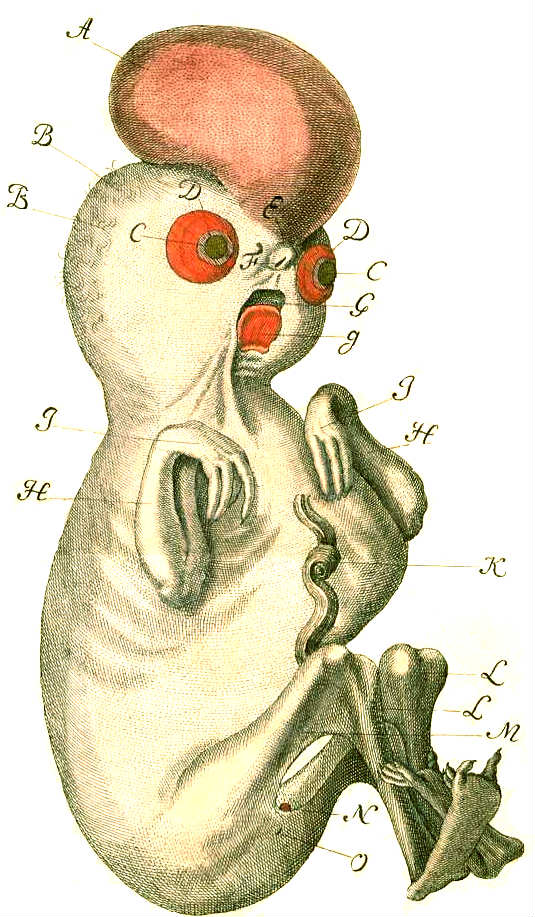The Hühnermensch
The “Chicken-human”
Enlargement
|
|
The Hühnermensch (“chicken-human”), as depicted in Friderici (1737). This strange birth was the offspring of a woman. The original engraving is life-sized (crown-length measurement of subject 20 cm). A: comb-like structure; B: fine, sparse hair; C: circular eyes; D: red periopthalmic rings; E and F: nasal opening with vestigial nares; G: oral cavity; g: external tongue (or wattle?); H: the “upper extremities are not unlike those of a plucked chicken"; I: hands with lengthy fingers and “claws exactly like those of a chicken”; K: umbilical cord; L: “The deformed feet, which are in an abnormal position and attached to chicken-like shanks, are, with the exception of their soles, of a wholly unwonted form, with the toes marvelously distorted and tipped with claws that are likewise exactly those of a gallinaceous fowl”; M: cutaneous flap joining the thighs with the calves; N: a reddish, lentiform structure in place of normal human genitalia; O: anus (cloaca?).
